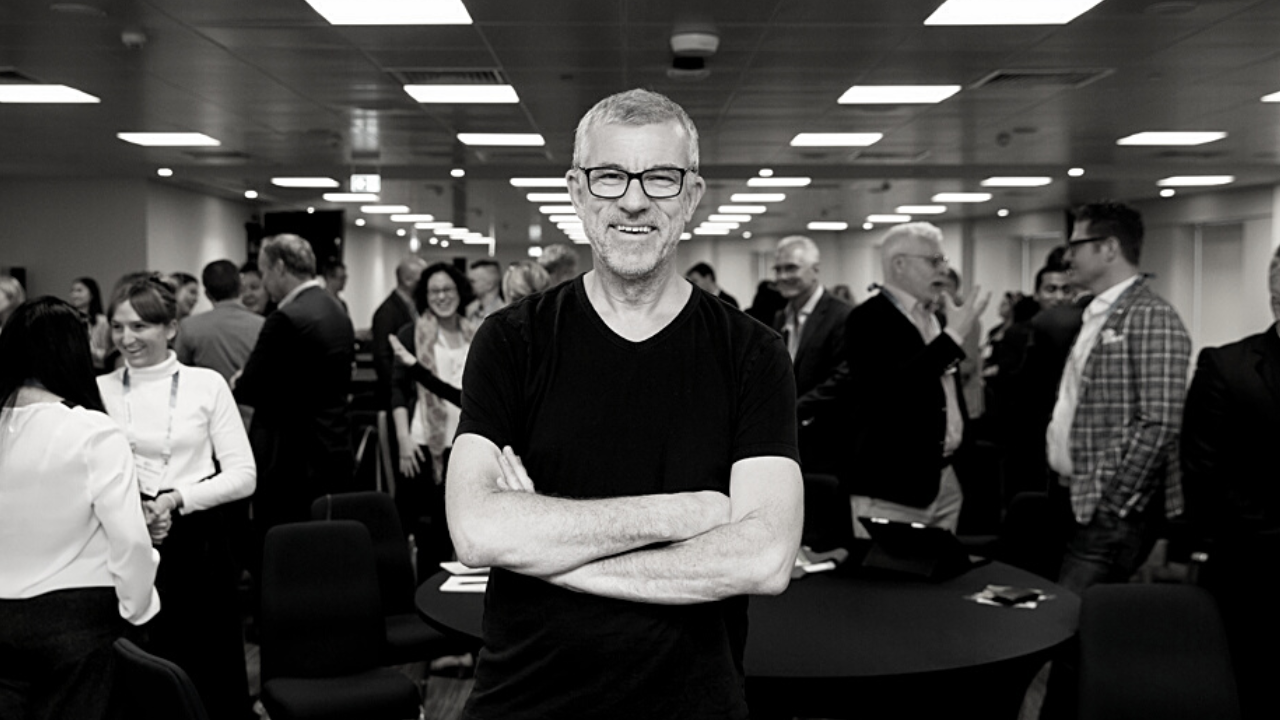
Pitch coach David Beckett on how to craft and deliver a winning pitch
This year, the Top 40 teams of sTARTUp Pitching can polish their pitches in a coaching session with the seasoned pitch trainer David Beckett from the Netherlands. We tapped into his expertise and asked David a few questions on how to nail your pitch.
David Beckett is an acclaimed keynote speaker and pitch trainer who has coached over 1800 startups to make outstanding pitches, raise over €400 million in investment and win over €9 million in prize money at pitching competitions. He has also trained over 28,000 professionals in innovation and sales teams at major companies in 29 countries. David is the author of the book Pitch To Win and the creator of The Pitch Canvas©. You can find out more about his activities at https://best3minutes.com/
The applications for sTARTUp Pitching 2023 close on 5 February.
You attended sTARTUp Day last year and watched most of the Top 40 pitches. What common pitfalls did you observe?
Firstly, I'd like to make clear that those pitfalls are perfectly understandable. If you think about what startups are good at, it's solving problems, putting together a team, and building products. Most founders are inexperienced in public speaking. In Europe, we don't get trained in that like in the US, where it's really ingrained in the culture.
But the number one pitfall was actually not finishing on time. I've done the research, and it turns out that you can speak a maximum of about 150 words per minute. My advice is to target 130-140 words. If you break that down, it's about 27 sentences for a three-minute pitch. So you need to keep that length in mind when building the pitch.
The added benefit is that if you take out the time pressure – if you know you are going to finish within three minutes – it also massively reduces the stress you feel on stage.
What are the key elements of a successful pitch?
I think there are two basic things: content and how it is delivered.
The pitches that didn't go so well focused a lot on the product and what it does. But while we're interested in the product, what we really want to know is what it is solving. What is the pain, and how many people or companies are experiencing it?
My advice is to start the pitch with clarity on the problem you are solving. What is wrong now? Is it time lost? Is it energy wastage? Is it material wastage? How big is the problem? How much is it costing? Be clear on the problem before you move on to the solution. This allows you to quantify the value of your solution, to say that your solution cuts the time in half or reduces the cost by 20%.
For instance, if you say that you have created a parking app that uses blockchain and open API to connect to other platforms, people don't know why you are using all those techniques. Instead, you could explain that in big cities like Amsterdam, each day, it takes drivers 20 minutes on average to find a parking space. That quantifies the size of the problem and says who is experiencing it. Then you could say what that means. It means that while people are driving around in circles looking for an elusive parking spot, they are missing out on dinners with their families again. Now you have quantified a rational problem but also shown a human problem that needs fixing.
Once people understand the problem and the solution, you could say something about what makes your solution unique.
Investors will also want to know what stage you are at. Are you in the validation phase or do you have your first customers and revenue? They will also want to know something about the team. Finally, you could wrap up with something like, "We're looking for X amount of money, which will help us do Y, and we are looking forward to working with you."
I think these are the key elements for the three-minute pitch: the pain, the product, what is unique, the progress and traction, your team and the call to action.
And how to nail the delivery part?
I thought the founder of Ringo gave an amazing pitch at last year's sTARTUp Pitching. He came on the stage like it was the best moment of his whole day – he was smiling, happy, and his pitch was full of energy.
Of course, not everybody is like that – it's difficult if you're more introverted. But I want to get across the mindset, "It's an opportunity. I'm happy to be here". Secondly, show what you are enthusiastic about, why it matters to you to solve this problem. Or perhaps you can show enthusiasm by telling about a breakthrough you had or some customer of yours.
The enthusiasm for being there and about your product can really be an X factor.
I know it's not culturally typical for Estonian to behave like that but I think it's about pushing yourself a little out of your comfort zone, turning up the volume and being a bit more expressive. Find something that makes you happy and communicate that!
The economic climate has changed over the past year. Does it change anything from a pitching perspective?
Here we should discuss two separate things. As to the three-minute pitch on the stage of a pitching contest or networking event – or what I call the glory pitch–, I'm not sure much has changed here. However, things are definitely different once you get into the meetings.
I think investors are looking for startups with a track record. In tough times, people look for safety and security, and security comes from proof that you can succeed: that is customers, a strong team, and resilient people. That might affect a little bit the glory pitch, but especially in the meetings, you might want to focus on things like having a lean operation, cost efficiency, and keeping your runway to a maximum.
However, the economy will go up and down, yet there are perhaps other more long-term trends, like the energy crisis. The fundamental cost of energy has probably gone up for good. So anything that helps with energy transition or reducing energy wastage might be something to focus on a bit more.
How much does one need to adjust a pitch to a specific audience?
The starting point of my coaching is always the audience. Who are they, and what do they care about? Also, what is your objective? What do you want these people to do? For instance, your pitch about your business would be quite different if you were talking to an investor or a potential customer.
Investors are looking for opportunities and signs of problems. So you might be describing to them, "There's a group of people or companies that are experiencing this problem. It's a massive opportunity." On the other hand, potential customers don't care about the market size. All they want to know is, "Do you understand my individual problem? How much value will your product give me, and why should I trust you?" So, there the proof and the traction are also relevant.
However, if somebody said to me that I had a problem, my first reaction would be to tell them that I was doing fine. So the way you would approach a potential customer is by painting a picture of what's happening in the world.
For example, you could say, "For companies in your industry, the biggest challenge today is X. We are helping these kinds of companies reduce their costs by 10% or improve their efficiency by 15%." Whereas, if you were pitching to investors, you'd say that the companies in this sector are doing it all wrong and are completely inefficient.
The audience steers the first 20% of the pitch, how you set things up. But how you explain your product will be mostly similar. The end of the pitch again depends on your objective. Do you want people just to be aware, or do you want them to take action? If so, what should they do? For instance, should they follow up at meetings, visit your website, or introduce you to somebody else in the organization?
You are very well-informed on the next batch of emerging startups. Do you notice anything different compared to ten or five years ago?
When I started as a pitch coach nearly ten years ago, one in 10 or 20 startups I worked with was in impact. Today, it's one in three. So the answer is definitely impact, whether it's sustainability, energy transition, or social issues – those three things have really come to the forefront.
If we think about WeWork or some other crazy stories, then sometimes founders get too focused on building a company to sell it for a lot of money. I'm not against any of that but I believe this in itself will not make people happy. A legacy is built up of what you are able to help other people achieve. Ultimately, we have to ask ourselves, why are we doing this? Those impact startups have a very clear ‘why’ and I love working with them. My way of making an impact is to help them get clarity on their story.
What book have you most often recommended to people?
Anything You Want by Derek Severs, who ran the company CD Baby in the 1990s and early 2000s, selling independent artists' music before iTunes and Spotify existed. He later sold the company for millions and gave most of his money to charity. It's a very short book, but I highly recommend it to any entrepreneur, as it gets to the heart of what and why we are doing and why it's sometimes necessary to go through a process instead of automating everything. He’s also a great person to listen to, so his TED Talks are also worth checking out.
David Beckett will be coaching the Top 40 teams of sTARTUp Pitching 2023. Applications close on 5 February.

Jekaterina Mazina: SafePAS’s Journey Ten Months After Winning sTARTUp Pitching 2025
